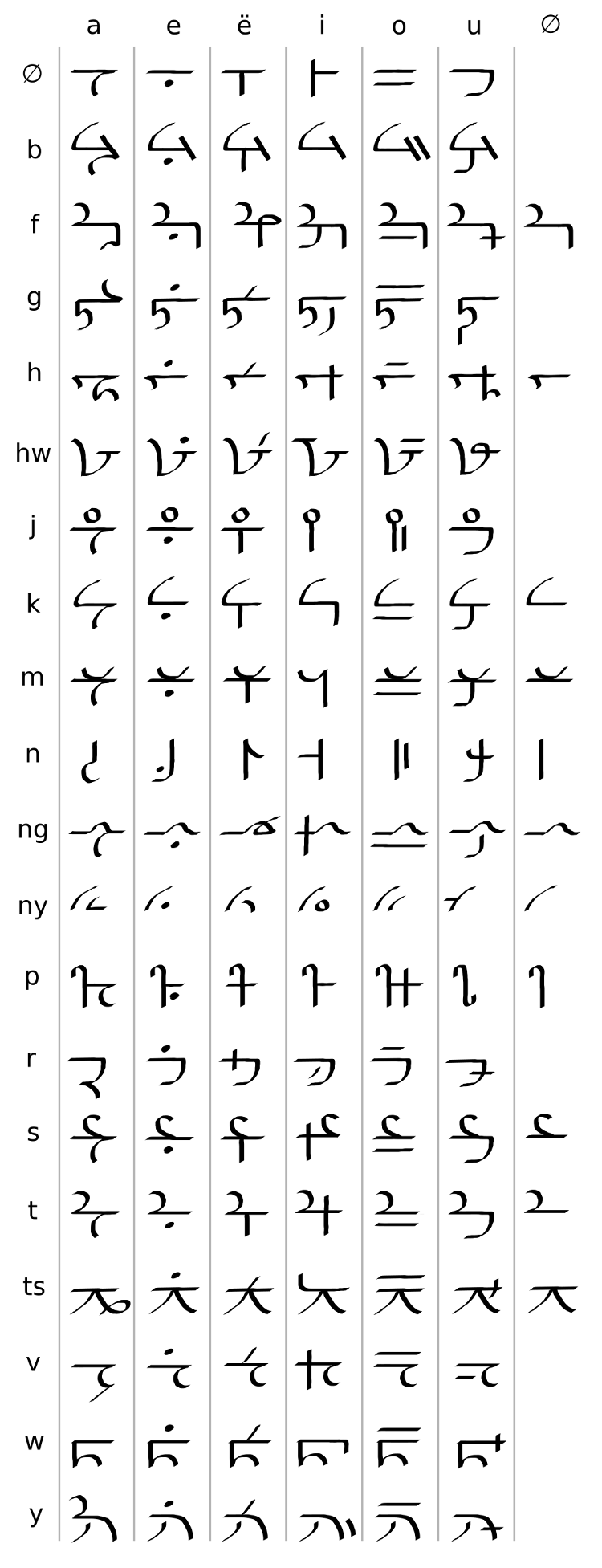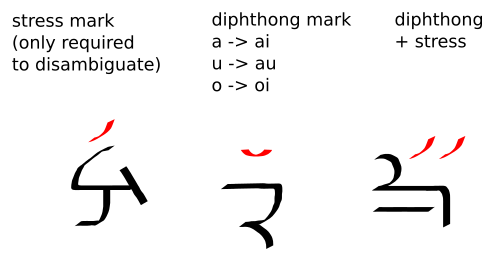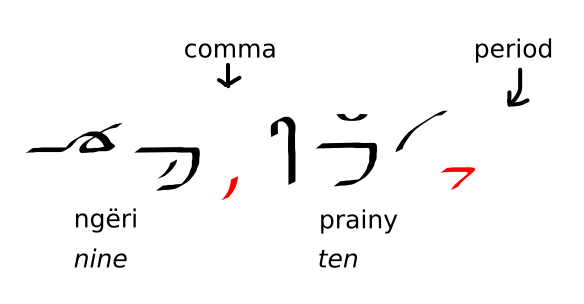The Yeh script is written from left to right, from top to bottom. It is traditionally written on paper with a pen and ink, but can be adapted to other media and writing implements, or represented digitally. It consists of 131 unique glyphs, 114 of which represent consonant+vowel sequences, an additional 6 glyphs representing syllables consisting of a single vowel. The remaining 11 glyphs represent single consonants, and are used only in consonant clusters or syllable codas.
The chart below contains the complete set of glyphs, organized vertically by consonant, and horizontally by the accompanying vowel. Glyphs appearing in rows or columns with the null sign (∅) represent single consonant or vowels.

Glyphs in the Yeh writing system that share an initial consonant tend to have a similar overall form, with some variation. There are patterns to how each glyph is transformed to indicate different accompanying vowels, though it's not applied consistently. Generally speaking, /a/ is made with a curve, /e/ with a dot, /ə/ (romanized as ë) with a line in the middle, /o/ with parallel lines, /u/ with an angled or intersecting line, and /i/ with a vertical line. As such, the Yeh writing system can be classified as an abugida, or alphasyllabary.
A vertical line above a glyph, similar to an accute accent, indicates a stressed syllable. The stress mark is applied to the vowel or consonant + vowel glyph containing the nucleus of the stressed syllable.
Yeh has phonemic stress, and there exists pairs of Yeh words that differ only in which syllable receives stress. When written, stress is only required to be marked on these words, to remove ambiguity. It may also be marked, optionally, on uncommon words that don't conform to Yeh's weighted stress rules. But marking stress is not obligatory for every word, and it is usually omitted when possible.
There are 3 possible diphthongs in Yeh. In the Yeh writing system, these are indicated by a diphthong mark. When the diphthong mark is applied, /a/ becomes /ai̯/, /o/ becomes /oi̯/, and /u/ becomes /au̯/. Two stress marks appearing above a glyph indicates that it is both a diphthong and a stressed syllable.

Yeh orthography makes use of a comma like symbol to mark pauses or delimit clauses. Sentences are ended with a chevron-like symbol, similar in function to a period. Space is left between words, with the exception of widely-recognized compound words, which are written without a space inbetween them.

Yeh also has a set of written place-value numerals, created to represent base 20 values. In day to day use, these have mostly been replaced by Arabic numerals in base 10, though the Yeh numerals are still used for ceremonial purposes. Written numerals can be found in the numeral section of this site.
